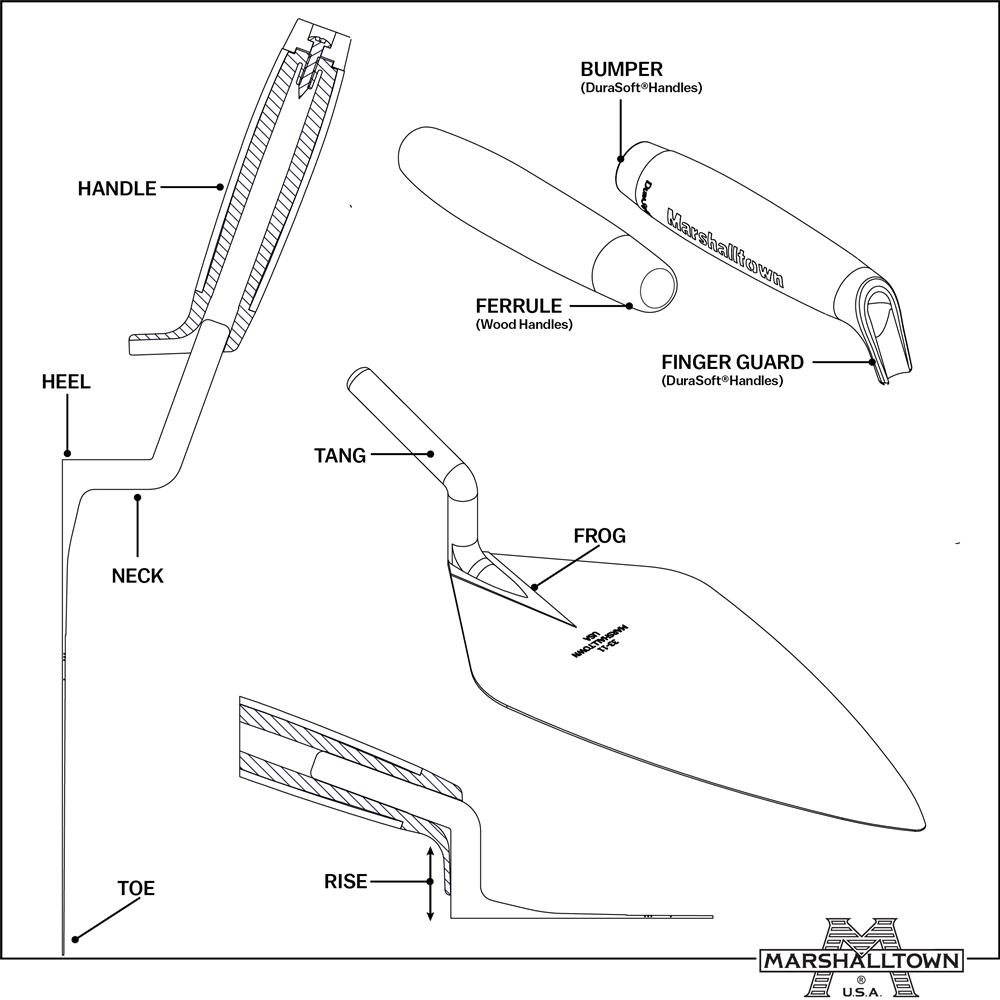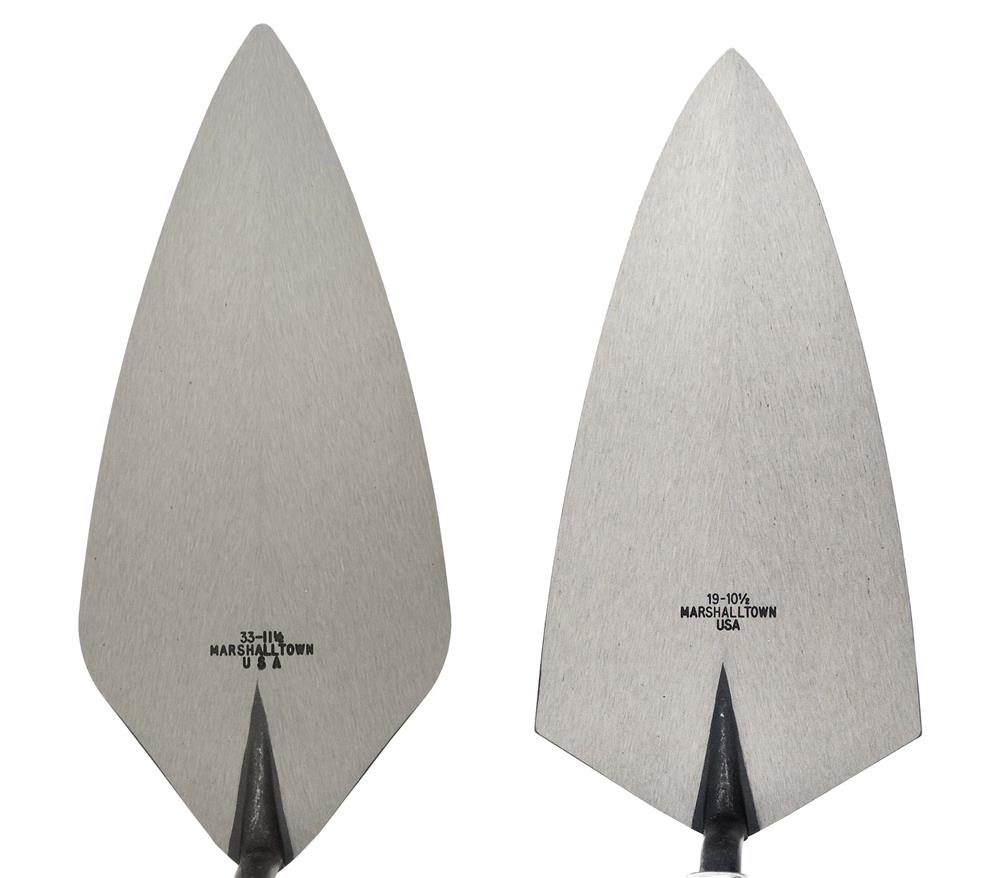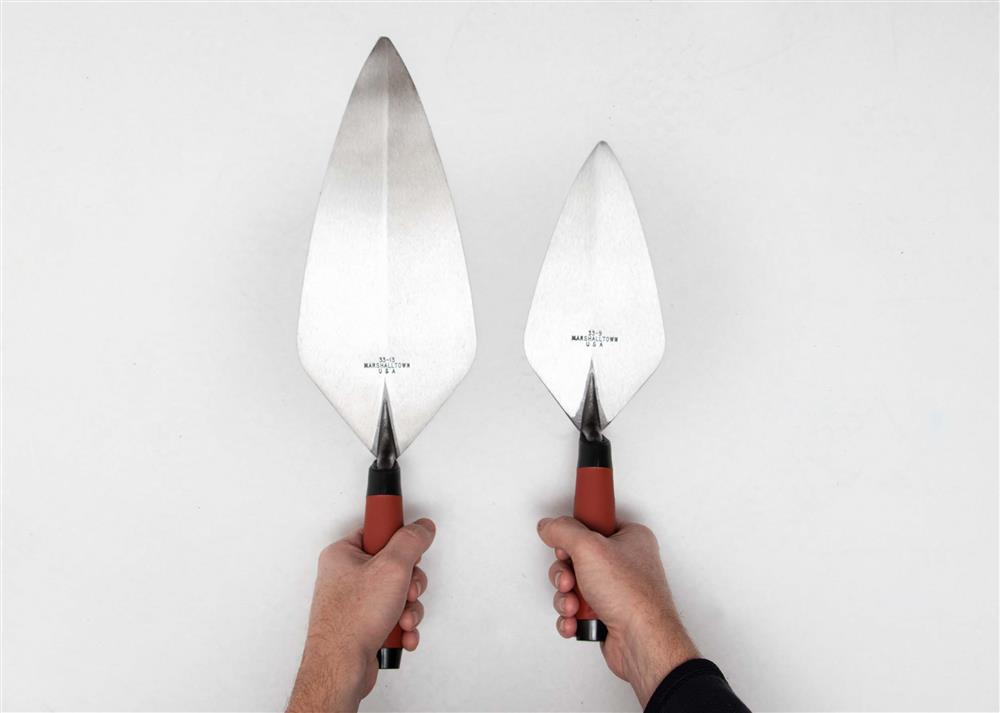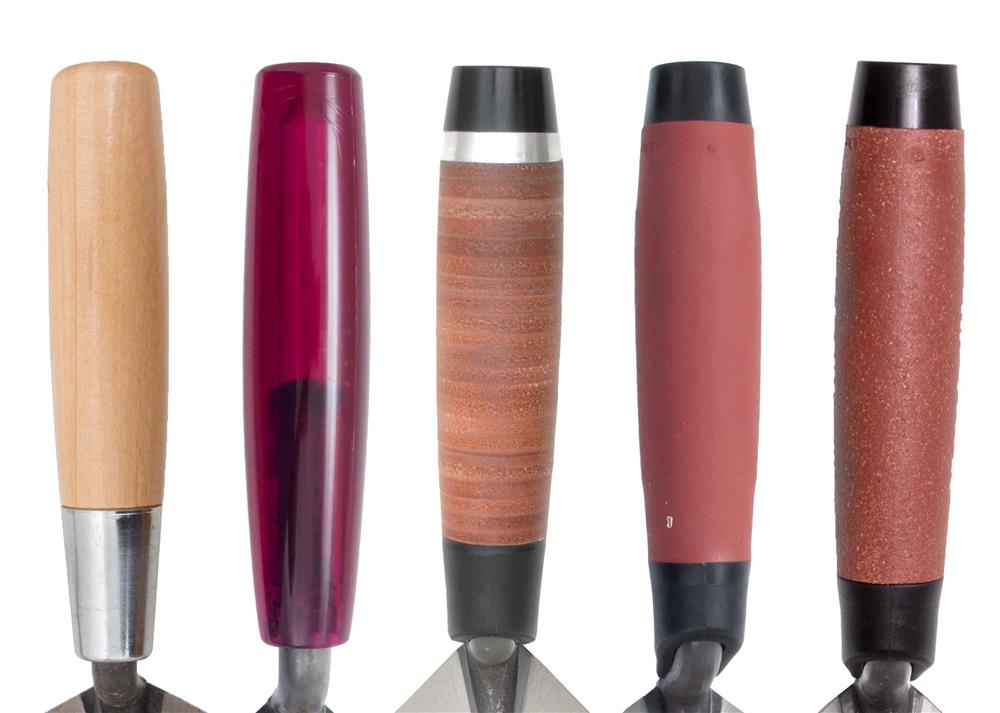Every mason carries a brick trowel in his or her tool bag—it’s one of the most important bricklaying tools. Without it, bricks can’t be laid and walls can’t be built. The challenge is knowing which trowel to use. Several factors play into this decision, like the trowel’s size, pattern, and handle material. We will walk you through everything you need to know to make the most informed decision when choosing a brick trowel for your next masonry project.
Construction
When using a tool, it’s important to know the parts of the tool and how they work. Knowing the parts of a brick trowel and their uses will help you make the best choice of which trowel to use.

Blade: The blade acts as your work surface. It is taper ground and polished to cleanly and effortlessly carry mortar from a mortar board to your structure. Quality brick trowels are forged from a single piece of high carbon steel, which promotes durability, flexibility, and improved comfort. Blades made by welding two pieces together have a weak point in the neck and heel, which can result in a snapped trowel.
Handle: Handles play an important role in the comfort of a brick trowel. There are many handle types.
Tang: This is an extension of the blade, like a tail. It is in the center of the handle and held secure with a ferrule.
Ferrule: This is a metal band that sits at the base of a wooden handle and adds strength while preventing the wooden handle from splitting.
Neck: The neck extends from the tang to provide lift between the blade and the handle. It helps provide optimal balance for a better feel.
Heel: This is the back portion of the blade and is where most of the mortar is carried. The shape of the heel depends on the blade pattern.
Pattern
“Pattern” is an industry term used to describe the shape of a Brick Trowel’s blade. There are two main patterns of Brick Trowel shown here—London (left) and Philadelphia (right).

London: London Brick Trowels have a narrow blade profile. MARSHALLTOWN offers a narrow or wide London Pattern. The London brick trowel pattern has a rounded heel and carries mortar farther forward on the blade, making it ideal for brickwork.
Philadelphia: Philadelphia Brick Trowels have a wide blade profile designed to hold more mortar making it easier to lay larger building materials like block and stone. These require more mortar than brick.
It is important to note that pattern, like size and handle material, are suggestions. Certain patterns are better suited for certain tasks, but there is crossover. Many masons in the UK, for example, prefer to use a Philadelphia pattern brick trowel for bricklaying while those in the USA swear by the London pattern.
Size
When choosing the size of brick trowel to use, keep in mind that is varies by application. Brick trowels are available in sizes ranging from 9” – 13” in length and 4-1/4” – 6” in width.

Smaller trowels between the 9” – 10-1/2” are easier to work with. The smaller blade carries less mortar, giving you better control. When you are just starting out, it’s best to work with a smaller trowel for that reason.
Trowels larger than 11” are better suited for journeymen and masonry professionals. The blades are longer and can carry more mortar, speeding up the bricklaying process but also making the trowel harder to carry.
Handle
Comfort is a key component when choosing a trowel, and the handle material plays a huge role in the trowel’s comfort level. There are several options to choose from and each has its own benefits.

Wood: This is the traditional option that has been used by stonemasons for nearly as long as masonry has existed (almost 12,000 years). They wear nicely but can be uncomfortable to use for long periods. They are susceptible to moisture damage, which can lead to splitting.
Plastic: These are the modern age alternatives to wooden handles. They are crack-resistant, easy to clean, and easy to grip. Unfortunately, like wooden handles, they can be uncomfortable to use for long periods of time.
Leather: Leather handles are popular among masons but are the most expensive. Leather handles provide a comfortable, non-slip grip ideal for working in wet weather or on a hot day when your hands are sweaty.
Soft-Grip: This is by far the most popular handle material. These are durable and comfortable to hold, which prevent muscle fatigue, allowing you to work longer. They also wear nicely.
Cork: These handles are an alternative to soft-grip handles. They have a textured, tacky feel that provides a comfortable and improved grip which helps prevent blisters. However, cork handles are more expensive than other handle types.
Key Take-Aways
When looking for the best brick trowel for your next project, use this quick guide to make sure you get the right masonry tool for the job.
1. Construction
- Only invest in trowels forged from a single piece of quality steel
2. Pattern
- Philadelphia – concrete block, stone, and brickwork
- London – brickwork
3. Size
- Smaller trowels under 10” ideal for beginners
- Trowels larger than 11” are better suited for professionals
4. Handle
- Soft-grip brick trowels are the most popular among masons
These are the best combinations for beginners, for laying bricks, and for laying cinder blocks and stone:
Beginners |
Bricklaying |
Concrete Cinder Blocks and Stone |
Pattern: London |
Pattern: London |
Pattern: Philadelphia |
Size: 10” |
Size: 11” |
Size: 12” |
Handle: Soft-Grip |
Handle: Soft-Grip |
Handle: Soft-Grip |
Once you get a handle on brick trowels and masonry work, experiment with your tools to find the combination that works best for you!
